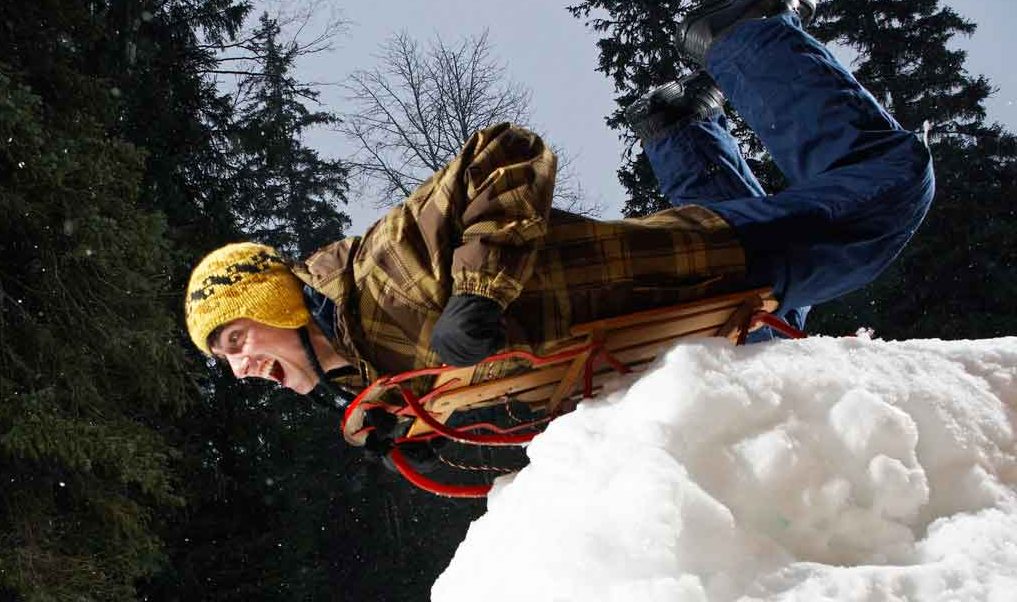Have Fun Safely in the Snow

If you’re not careful, you could leave the ski slope with cuts, bruises, broken bones, or frostbite. Here are a few tips to stay safe during winter activities.
The first snowfall of the season can make anyone feel like a kid again. Winter brings so many opportunities for fun — snowballs to throw, frozen ponds to skate, and mountains to ski. Yet if you’re not careful, you could leave the ski slope or frozen pond with cuts, bruises, broken bones, or frostbite.
Here are a few tips to stay safe during those and other winter activities.
YOU MIGHT ALSO LIKE: How to Prevent Cold Weather Injuries
Ski and snowboard safety
Out of the estimated 10 million North Americans who hit the slopes each year, around 600,000 injuries are reported. Up to 20 percent of them are head injuries, like the seemingly minor 2009 spill that caused the death of actress Natasha Richardson. One way to avoid becoming a statistic is to wear the proper safety gear — especially on your head.
“Safety helmets clearly decrease the risk and severity of head injuries in skiing and snowboarding,” wrote the authors of a research review on skiing head injuries. Snowboarders will get extra protection from elbow pads, knee pads, and wrist guards.
It’s important to know what you’re doing.
“Before hitting the slopes, inexperienced participants should consider taking a lesson (or several) from a qualified instructor to help prepare for the unexpected like learning how to fall safely,” said Michael Cheek, MD, an orthopedic sports medicine specialist.
Don’t ski beyond your ability. Stick to the slope that matches your skill level. If you want to move up to the next difficulty level, invest in ski or snowboard lessons. Get in shape before the season and stretch before your run to prevent muscle strains and other injuries.
Sledding
A simple plastic sled can reach speeds of 25 miles per hour, and its path is hard to control. Helmets are a must — especially for kids. To ensure that everyone stays safe, sled only down open hills. Watch out for trees, streets, large rocks, frozen lakes, or other dangers that could surprise you at the bottom of the hill. Always sled feet-first.
Ice skating
No matter how perfect the ice on a frozen pond appears, that smooth surface could hide cracks and thin spots underneath. Before stepping onto the ice, make sure it’s thick enough for skating. Skate only on designated bodies of water. If a sign warns of thin ice, stay away.
Your skates should fit well and give you good ankle support. A little experience never hurts. Before hitting the ice for the first time, take a lesson or two to learn how to stop, turn, and fall without hurting yourself. Never skate alone. Always bring a friend or partner so you can look out for each other.
Snowball fights
What could be more fun than pummeling your friends with an arsenal of hand-made snowballs?
Snowball fights provide hours of free winter entertainment, but danger can lurk inside those seemingly innocent white balls. A chunk of ice or rock that accidentally sneaks inside a snowball could cause serious injury — even brain damage. Both kids and adults need to be careful when they pack snowballs, to make sure no hard object lurks inside.
Even if the snowball is soft, never aim it at a person’s head, where the risk for injury is highest.
Bundle up
Before you head outside to ski or sled, make sure you’re properly attired for the elements. Exposure to the cold without the right gear can lead to hypothermia — a dangerous drop in body temperature — as well as frostbite.
Dress in layers, with a warm, waterproof coat and hat on top. Cover your extremities with gloves or mittens and thick boots. Make sure your clothes have no openings through which snow might sneak in. Getting wet will make you feel even colder.
If your skin turns red, tingles, or hurts, go inside as soon as you can to warm up.
Apply sun protection
Even in cold temperatures, you need to apply a layer of SPF 30 or higher sunscreen before going outside.
“It’s easy to associate winter with frostbite and windburn, but most people are unaware that UV rays can be every bit as damaging on the slopes as on the beach,” said Perry Robins, MD, founder of The Skin Cancer Foundation.
Ultraviolet radiation exposure increases by 4 to 5 percent for every 1,000 feet above sea level you go, which means the sun is more intense at the top of a ski slope than it is at the beach. Snow and ice act as reflectors, making the sun’s rays even more potent.
Updated:
October 25, 2023
Reviewed By:
Janet O’Dell, RN